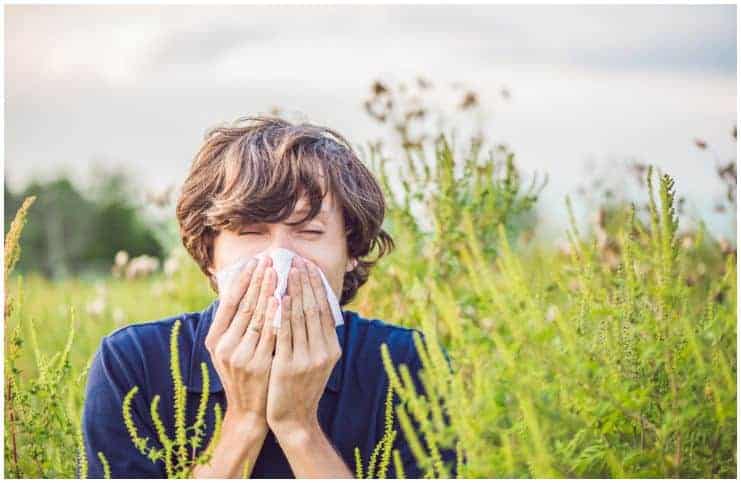Benadryl
It is the brand name of a drug called diphenhydramine. It is part of a class of drugs called antihistamines and is prescribed to relieve symptoms of the common cold and allergies. It works by blocking certain effects of histamine and is a first-generation H1-antihistamine.
It is manufactured and distributed by McNeil Consumer Healthcare, a subsidiary of Johnson & Johnson, an American multinational pharmaceutical, medical devices, and consumer packaged goods manufacturing company.
Uses
It is typically used to relieve the symptoms of hay fever and allergies including nasal congestion, runny/stuffy nose, and itchy/watery eyes.
Moreover, it has been used for the treatment of muscle stiffness and tremors in people diagnosed with Parkinson’s disease, a progressive neurological condition caused by damage to nerve cells in the brain. Parkinson’s disease is one of the most frequent neurologic disorders, affecting around 1 percent of people older than 60 years.
Note – the use of antihistamines can lead to sleepwalking and other parasomnias. However, this medication is not a long-term fix for sleep problems since your body can rapidly build up a tolerance.
Dosage
For children ages 6-12, the usual recommended dose is 1 tablet every 4 to 6 hours or as directed by your healthcare professional doctor. For children ages 12+ and adults, the usual recommended dose is 1 to 2 tablets every 4 to 6 hours or as directed by your healthcare professional.
Note – because this medication can cause serious side effects, it is not recommended for use in children under 6 years.
Side Effects Of Diphenhydramine
Common side effects may include:
- blurry vision;
- dry mouth;
- confusion.
Rare side effects may include:
- fluttering in the chest;
- pounding heartbeats;
- little or no urinating;
- difficult urination;
- uncontrollable movements of the tongue;
- tightness in the neck or jaw;
- feeling like you might pass out;
- confusion.
To be sure that this medication is safe for you, tell your healthcare provider if you have or had:
- bladder obstruction or other urination problems;
- blockage of the digestive tract (intestines or stomach);
- kidney disease;
- an ileostomy or colostomy;
- taken potassium supplements;
- liver disease;
- low blood pressure;
- chronic obstructive pulmonary disease;
- heart disease;
- asthma;
- a thyroid disorder;
- glaucoma;
- a cough caused by emphysema, smoking, or chronic bronchitis;
- a cough with mucus.
Because this drug can cause dizziness and drowsiness, use caution when you operate heavy equipment. Also, if you have taken a monoamine oxidase inhibitor, like – Isocarboxazid (Marplan), Phenelzine (Nardil), or Tranylcypromine (Parnate), you should not use this medication because it can trigger serious side effects.
Claritin
It is the brand name of a drug called loratadine that belongs to a group of medications called Histamine H1 Antagonists. Antihistamines work by blocking the release of a chemical your body naturally produces in the human body due to exposure to something which causes an allergic reaction.
This medication is on the World Health Organization’s List of Essential Medicines and it was discovered in 1981. This drug was first approved by the Food and Drug Administration in 1993.
Uses
It is typically used to treat seasonal allergic rhinitis, hay fever, and other allergies.
Dosage
For adults and children over 10 years of age, the usual recommended dose of loratadine syrup is 10 mL once per day. For adults and children 12 years of age and older, the usual recommended dose of loratadine capsule is 10 mg once per day.
Side Effects And Precautions Of Loratadine
Common side effects may include:
- headaches;
- sleepiness;
- diarrhea;
- dry throat;
- dry mouth;
- dry eyes;
- stomach pain;
- tiredness.
Rare side effects may include:
- severe headaches;
- uneven heart rate;
- a light-headed feeling.
Benadryl vs Claritin – Differences
Benadryl (active ingredient – diphenhydramine) belongs to a group of medications called Histamine H1 Antagonists. Like other antihistamines, it is mainly used to help reduce symptoms associated with allergies, like – a runny nose and sneezing. It works by blocking the effects of a substance released by the body involved in allergies called histamine.
Loratadine (active ingredient – loratadine) belongs to the class of drugs called second-generation antihistamines, more exactly, the class known as histamine receptor antagonists. This medication reduces the effect of histamine, a neurotransmitter that can cause itchy eyes, a runny nose, sneezing, and rashes.
Natural Ways to Treat Seasonal Allergy Symptoms
#1 Peppermint
It contains luteolin-7-O-rutinoside, a form of flavonoid that helps inhibit the secretion and activity of anti-inflammatory enzymes as well as it reduces the discomfort which comes along with them.
#2 Bromelain
It is an enzyme only found in pineapples that helps dissolve the foreign proteins which can cause allergic reactions and swelling. This enzyme is also used in both modern and folk medicine to help relieve pain. Plus, a few recent studies concluded that it may hold a crucial role as a novel anticancer therapy.
#3 Butterbur
It is a herbaceous perennial plant that is native to Northern Asia and Europe. It has a long history of use in traditional medicines for the treatment of flu and other infections. According to research, butterbur is considerably better than conventional allergy drugs.
#4 Quercetin
It is a bioflavonoid that is found in many vegetables and fruits. Quercetin has potent anti-fungal, anti-inflammatory, and antihistamine attributes, which make it useful for fighting allergies.
Foods rich in quercetin include – garlic, onions, green tea, red kidney beans, blueberries, Ginkgo biloba, blackberries, apples, pears, cranberries, zucchini, currants, St. John’s Wort, and papayas.
#5 Omega 3 Rich Foods
People who consumed foods rich in omega 3 essential fatty acids (like flax seeds, chia seeds, kidney beans, walnuts, almonds, chickpeas, lentils, hazelnuts, and pecans) daily are less likely to suffer from allergies compared to people who consume these foods only occasionally.
Image source – @Getty & Shutterstock
READ THIS NEST: Zzzquil vs Benadryl – Uses
References https://www.health.harvard.edu/blog/common-anticholinergic-drugs-like-bena https://www.ncbi.nlm.nih.gov/pmc/articles/PMC4592307/ https://www.fda.gov/ohrms/dockets/ac/01/briefing/3737b_12_label-claritin.pdf
